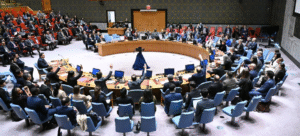Escalating Tensions: India and Pakistan Grapple with Renewed Conflict
The recent surge in tensions between India and Pakistan, ignited by a terror attack in Pahalgam, Jammu and Kashmir, underscores the enduring fragility of their relationship and the potential for regional instability. India’s immediate response, requesting the International Monetary Fund (IMF) to review loans to Pakistan, signifies a hardening stance and an attempt to leverage economic pressure in the wake of the attack. Simultaneously, the blocking of Pakistan’s Prime Minister Shehbaz Sharif’s YouTube channel within India further amplifies the communication breakdown and mistrust between the two nations.

International Calls for De-escalation
The international community has swiftly reacted to this escalation. The United Kingdom has voiced its concern, labeling the situation as “incredibly dangerous” and urging both sides to de-escalate. This plea reflects a broader apprehension about the potential for conflict in a region armed with nuclear capabilities. Similarly, US Vice President JD Vance has called on Pakistan to actively cooperate with India in apprehending the perpetrators of the terror attack while simultaneously urging restraint from India. This nuanced statement highlights the delicate balance the US seeks to maintain, acknowledging India’s legitimate security concerns while emphasizing the need to avoid actions that could further inflame the situation.
Economic and Communication Fallout
The request to the IMF to review Pakistan’s loans introduces a complex economic dimension to the already fraught political landscape. India’s move suggests a belief that Pakistan’s alleged support for or inaction against terrorist groups should have economic repercussions. However, such actions could further destabilize Pakistan’s already fragile economy, potentially exacerbating regional instability and hindering efforts towards dialogue in the long run. The IMF’s response to India’s request will be closely watched, as it could set a precedent for linking financial assistance to geopolitical considerations. The blocking of Prime Minister Sharif’s YouTube channel in India, while perhaps seen as a reciprocal measure or a move to control the narrative within India, further restricts avenues for communication and understanding between the two countries. In an era of digital connectivity, such actions can be counterproductive, hindering the flow of information and potentially fueling misinformation and animosity.
The Imperative for Dialogue and Restraint
The calls for de-escalation from the UK and the US underscore the international recognition of the grave risks associated with heightened tensions between India and Pakistan. The history of conflict and mistrust between the two nations necessitates a cautious and diplomatic approach from all stakeholders. While India’s anger and demand for justice following the terror attack are understandable, the path forward requires a commitment to dialogue and a rejection of actions that could lead to further conflict.
Charting a Path Towards Stability
Ultimately, resolving the underlying issues that fuel terrorism and mistrust requires a multifaceted approach. Pakistan needs to take credible and verifiable steps to dismantle terrorist infrastructure within its borders and actively cooperate in bringing perpetrators of cross-border terrorism to justice. For its part, India needs to pursue its security interests while remaining open to dialogue and avoiding measures that could be perceived as escalatory or punitive towards the entire nation of Pakistan. The international community, including the UK and the US, can play a crucial role by facilitating communication, encouraging de-escalation, and supporting long-term efforts towards peace and stability in the region. The current spike in tensions serves as a stark reminder of the urgent need for constructive engagement and a commitment to peaceful resolution.




















